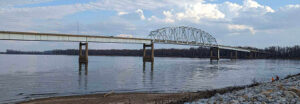FEMA’s Public Assistance Program provides post-disaster grants to state, tribal, territorial, and local governments, and certain types of private non-profits so communities can quickly respond to and recover from major disasters or emergencies.
| Supports nature-based solutions | Requires a Major Disaster Declaration |
Application cycle: When an area has received a Presidential declaration of an emergency or major disaster, then its state, tribal, territorial and local governments — and certain types of private non-profits — may be eligible to apply for Public Assistance (PA).
Summary: FEMA’s Public Assistance (PA) program supports disaster recovery by providing grants for debris removal and life-saving emergency protective measures and restoring public infrastructure. If your community qualifies for repairs through FEMA’s PA Program, you may also be eligible for additional funding to protect your community’s facilities and infrastructure. The 406 Mitigation Program can support additional hazard mitigation measures in conjunction with the repair of disaster-damaged facilities to improve their future resilience.
Eligible applicants: States, federally recognized tribal governments (including Alaska Native villages and organizations so long as they are not privately owned), U.S. territories, local governments, and certain private non-profit (PNP) organizations.
Eligible activities: Hazard mitigation improvements to a disaster-damaged facility, such as the construction of floodwalls, installation of culverts for improved drainage, elevation of equipment above the base flood elevation, slope stabilization, and upgrading of materials to disaster-resistant options.
Funding: Generally, no federal statutory maximums exist for eligible activities. Instead, hazard mitigation measures must meet one of the following tests of cost effectiveness:
- Cost no more than 15% of the total cost of repair work for the damaged facility.
- Cost no more than 100% of the total cost of repair work and project is on the list of FEMA-approved mitigation measures.
- Have a benefit-cost ratio of equal to or greater than 1.0.
Cost share: 75% federal (minimum) / 25% nonfederal. The cost share is dependent on the match ratio set by FEMA Public Assistance for the specific disaster.
- Filter — Needs-Based Cost Sharing: FEMA recommends an increase up to 90 percent of actual federal obligations, excluding administrative costs, meet or exceed a qualifying threshold
- Filter — Federal Fund Braiding: Applicants may apply other federal award funds toward the PA non-federal cost share if the other federal agency has specific statutory authority allowing so. If an applicant uses funds from another federal agency to meet the non-federal cost share, it must meet all requirements of the other agency as well as all PA Program requirements. Applicants cannot apply PA funds toward the non-federal cost share of other federal agency awards.
Application process:
- FEMA evaluates proposed PA mitigation measures for four main factors: risk reduction, cost-effectiveness, technical feasibility, and compliance with applicable laws and regulations. These funds can be used in conjunction with FEMA’s Hazard Mitigation Grant Programs. FEMA assists and handles many steps of the grant process in coordination with the applicant.
- During the recovery process, FEMA will assist with assessing damage, developing a Hazard Mitigation Proposal, and evaluating the cost-effectiveness of mitigation projects.
- Local officials should contact their State Hazard Mitigation Officer or federally recognized tribal or local government official to obtain detailed information on the application process. Identify your state officer online.


